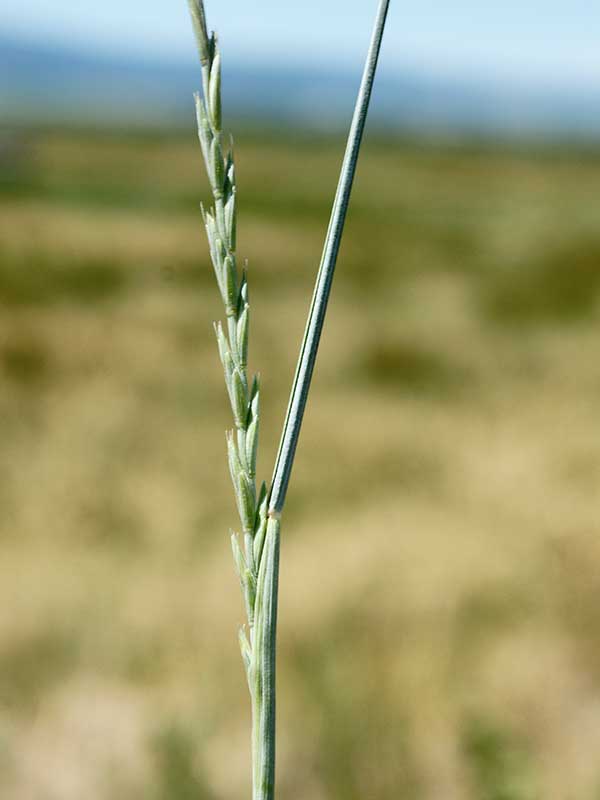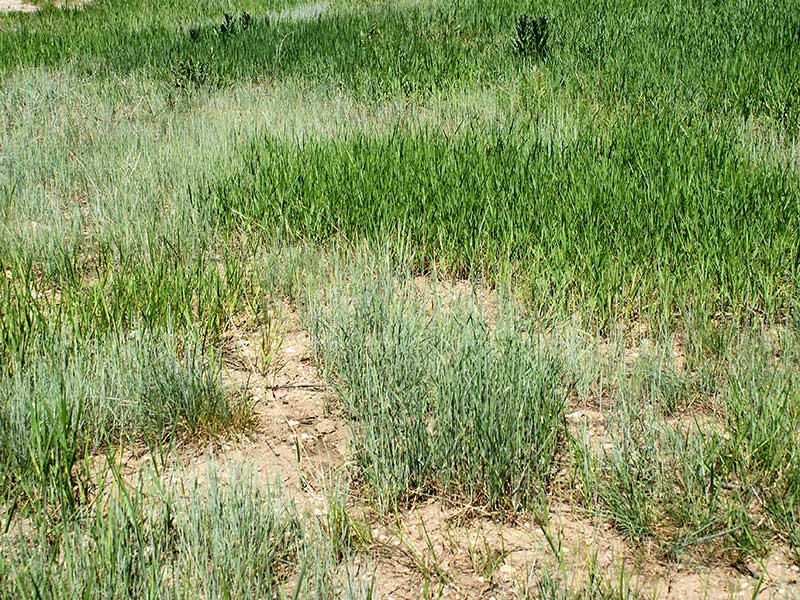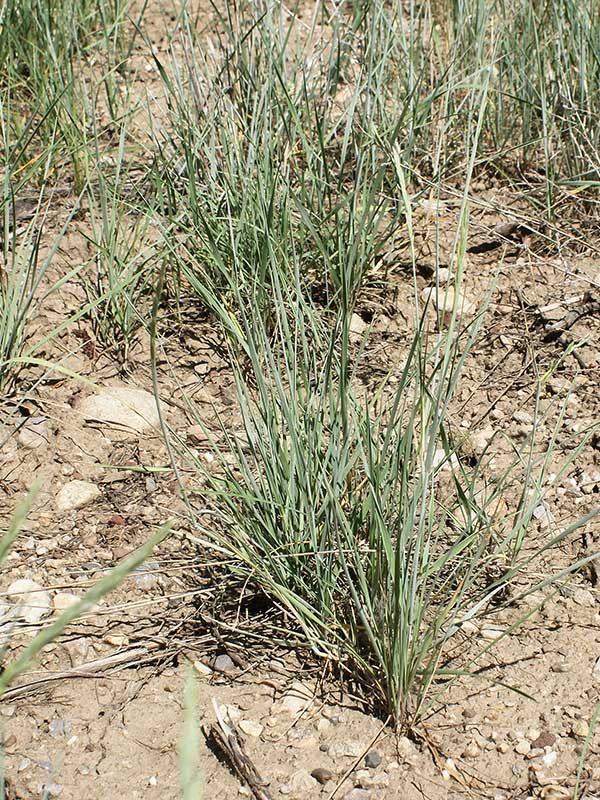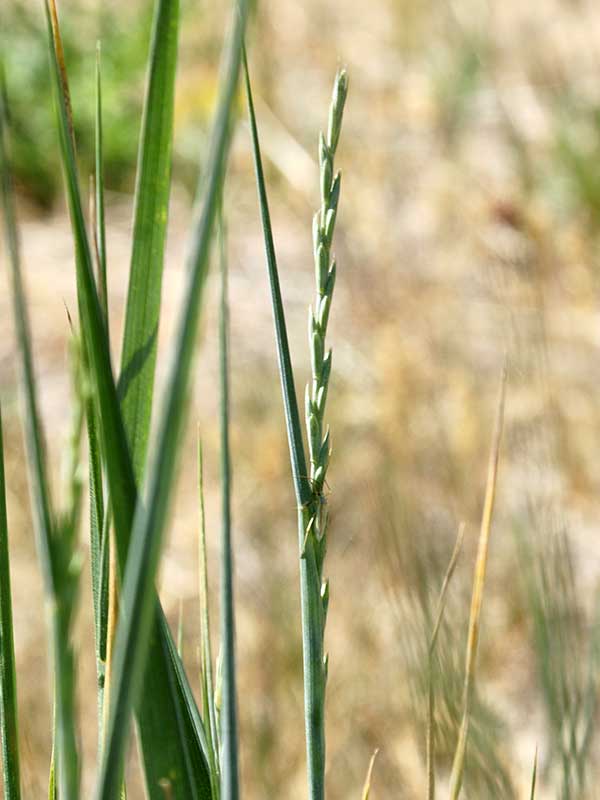Elymus trachycaulus / slender wheatgrass
- cool season bunchgrass; no rhizomes
- flower spikes very narrow and linear; overlapping spikelets tightly pressed to stem
- flat, medium-width leaves; somewhat bluish
- beautifully straw colored in fall
- common but rarely abundant; many habitats
Also known as: bearded wheatgrass, rough-stemmed wheatgrasss
Synonyms: Agropyron trachycaulum
Note: grasses have a nomenclature all their own, much different from that of dicots. A good resource/slide show from the University of Idaho on grass structures is available here.
Slender wheatgrass is a short-lived perennial, cool-season bunchgrass. It is a native species of wild rye and grows up to 40 inches tall. It usually lacks rhizomes but tillers (branches from the base) freely. It begins growing in mid-spring – whenever that might happen to be – and the seeds mature at the end of the summer. It spreads both by tillers that root as they fall over, and by seeds.
The inflorescence of slender wheatgrass is pretty distinctive, being very narrow and linear. The individual spikelets are appressed to the stems and overlapping. The individual spikelets are green or violet-tinged. The inflorescence is a spike-like raceme up to 10 inches long. The spikelets grow singly at each node of the rachis; each has 3 to 7 flowers. The spikelets and fruits generally lack awns (prickly bits at their ends). Slender wheatgrass flowers are self-pollinating.
Slender wheatgrass leaf sheaths may have a pair of brown or purple lobes (auricles) at their base – see the gallery photo. Overall, they may appear blue-ish in contrast with surrounding grasses. Individual leaves are flat, a bit over ¼ inch wide (medium width), and taper toward the tips. They are either stiffly upright or “somewhat lax”. Ligules are short and collar-shaped… not much to look at. As they senesce toward the fall, the leaves, stalks and inflorescences all turn a lovely tan or straw-color. Again, see the gallery photo.
Slender wheatgrass is described as “common but rarely abundant” in many plant communities, including aspen and lodgepole pine forests, sagebrush steppes, grasslands and disturbed areas. Its competence to establish in the latter makes it a potential weed. It is tolerant of a wide variety of habitats, from dry to wet soils, deep or shallow. It has been used to reclaim mine spoils, oils sands and roadsides. It has been planted after wildfires and other disturbances. Its salinity tolerance is high enough that it can be grown there, too.
Upland game birds and small mammals eat the seeds of this grass, and use the foliage for cover. It is happily grazed by elk, bighorn sheep, large ungulates and domesticated livestock, and humans. Apparently, it can be a good addition to smoothies.
| Color | |
|---|---|
| Family | |
| Inflorescence type | |
| When? | |
| Where? |





